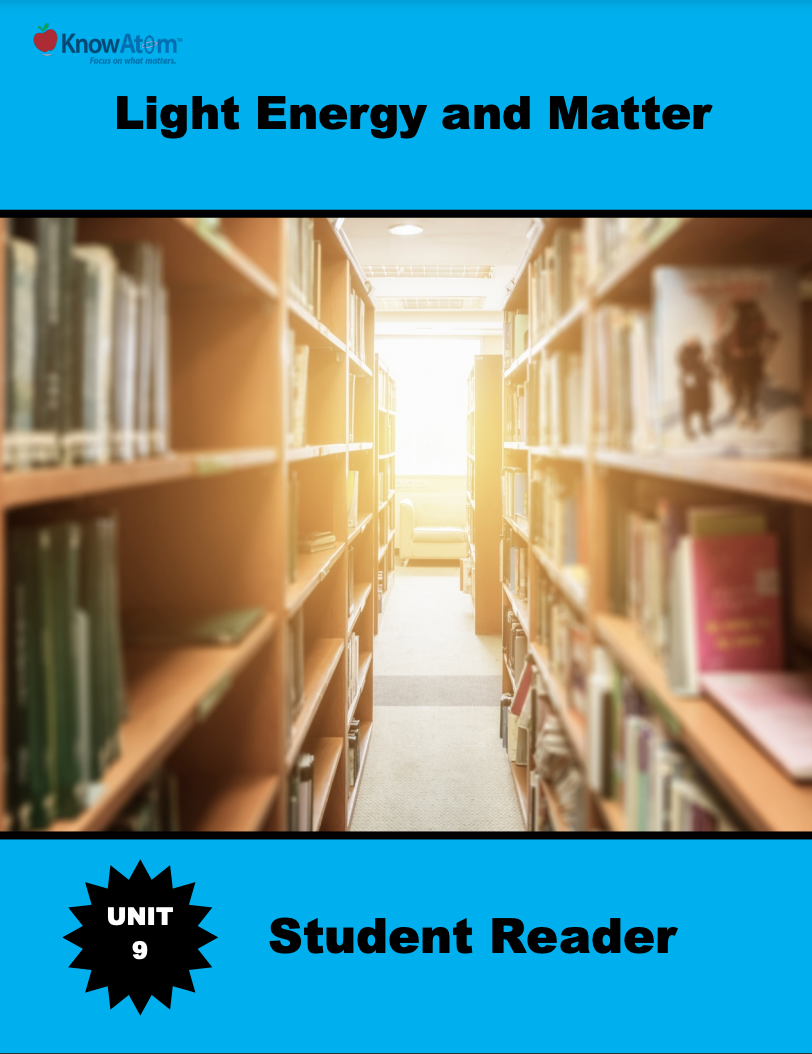
In this unit, students analyze the science phenomena of the important role that oceans play in regulating Earth’s climate. In this lesson, they focus on how oceans interact with other Earth systems to distribute water and heat around the planet, resulting in various weather patterns, including hurricanes. This page highlights key components of this lesson.

In this unit, students figure out phenomena of Earth’s interacting systems, focusing on how the hydrosphere interacts with and is influenced by the other systems. In this lesson, students apply their scientific knowledge of Earth’s water system to engineer water filtration devices to figure out how to reduce the impacts of water pollution on the environment. This page provides an overview of key aspects of this lesson.

In this unit, students focus on the biosphere, analyzing how living things interact with one another and their environment for survival. In this lesson, students figure out the science phenomenon of how plants gather energy and nutrients. This page is a high-level extract of this lesson.

In this unit, students analyze how matter cycles between the living and nonliving parts of an ecosystem. They compare plant and animal cells, figuring out how internal structures help an organism get energy. Then, in this lesson, students figure out how energy flows and matter cycles through a food web, and investigate the phenomena of how plants convert non-food sources, such as light, air, and water, into food sources. This page showcases key elements of this lesson.

In this unit, students focus on the biosphere, analyzing the science phenomena of how living things interact with one another and their environment for survival. In this lesson, students focus on the role of decomposition as they design a compositing solution. This page is a high-level extract of this lesson.

In this unit, students focus on how environmental changes impact the ability of organisms to survive, grow, and reproduce, passing their traits on to future generations. In this lesson, students continue their analysis of how a plant’s structures allow it to grow and develop, focusing on how a change in the environment such as pollution can impact a plant’s ability to complete its life cycle. Specifically, students investigate how acid rain affects the external structures of aquatic plants. This page provides an overview of this lesson.

In this unit, students evaluate the science phenomena of how a change to an ecosystem can impact the living things that make it up. In this lesson, students explore how a change to the kind of plants in an environment results in a ripple effect phenomena on predation in the area. This page is a high-level extract of this lesson.

In this unit, students focus on light energy, investigating the science phenomena of how light moves when it interacts with different kinds of matter. Students use scientific knowledge about light to engineer a device that uses mirrors to redirect light. This page is a high-level extract of this lesson.

In this unit, students explore the science phenomena of matter, energy, and heat transfer to explore weather and climate. In this lesson they investigate how the sun powers the global water cycle, which in turn has very local impacts that affect regional climates around the world. This page is a high-level extract of this lesson.

In this unit, students investigate the relationship between the water cycle, ocean salinity, weather, and climate. In this lesson, students explore ocean salinity and analyze how ocean density is related to its molecular structure. This page highlights key components of this lesson.

In this unit, students build on their scientific knowledge about matter, energy, and heat transfer to explore science phenomena related to weather and climate. They investigate how the sun powers the global water cycle, which in turn has very local impacts that affect the phenomena of regional climates around the world. This page showcases all the parts of this lesson.

In this unit, students focus on the structure and function of specialized cells, tissues, and organs in the phenomena of complex multicellular organisms, and they explore how the body processes information gathered by sensory receptors. In this lesson, they develop a model for a human organ system and then observe different human cells to understand how structure influences function. This page highlights each part of this lesson.

In this unit, students discover the structure and function of specialized cells, tissues, and organs in complex multicellular organisms, and they explore the phenomena of how the body processes information gathered by sensory receptors. This page is a high-level lesson extract.
Standards citation: NGSS Lead States. 2013. Next Generation Science Standards: For States, By States. Washington, DC: The National Academies Press. Neither WestEd nor the lead states and partners that developed the Next Generation Science Standards were involved in the production of this product, and do not endorse it.
